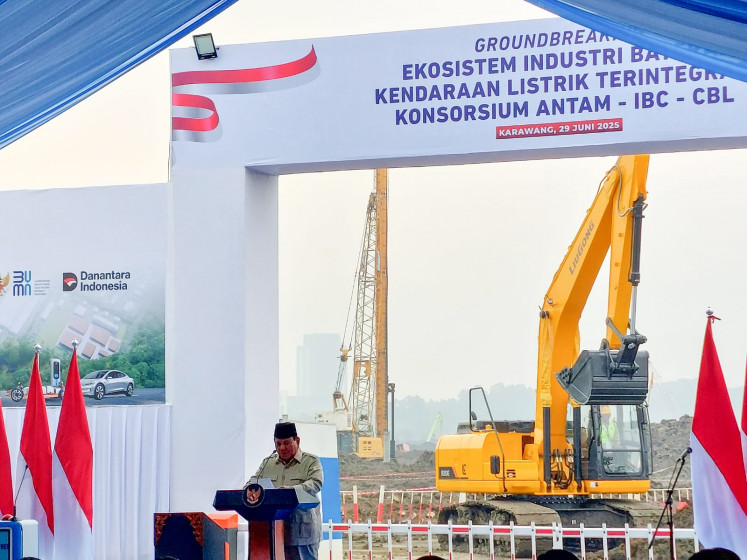Popular Reads
Top Results
Can't find what you're looking for?
View all search resultsPopular Reads
Top Results
Can't find what you're looking for?
View all search resultsUS embassy to relocate ex PM office
United States Ambassador to Indonesia Scot A
Change text size
Gift Premium Articles
to Anyone

U
nited States Ambassador to Indonesia Scot A. Marciel said that a historical building located in the US Embassy’s compound would not be torn down but would instead be relocated as part of a plan to build a new 10-story office building.
“We’re preserving it, we’re not demolishing it,” he told a press conference on Friday, referring to the building that was used as the office of Indonesia’s first prime minister Sutan Sjahrir.
Marciel said that the plan was to relocate and restore the building to a new location inside the compound, and added that when completed, the building would be visible from Jl. Medan Merdeka Selatan, in Central Jakarta.
“We’re not planning to set up an embassy office [in the building] and it will also be open for public. Once it’s relocated, the building can be a museum, or we can have lots of events in that building, too,” Marciel said.
However, he could not elaborate on how the relocation and restoration would be carried out. Tamela Simpson, the project director of the US Bureau of Overseas Buildings Operations, said that since the first planning phase, they had consulted with a local conservationist regarding the project.
“The restoration will use internationally recognized preservation techniques under the guidance of a local historic preservationist,” she said. “And we have also gone through all the permit processes with the Indonesian government,” Simpson said, refusing to reveal the local partner.
Sutan Syahrir was Indonesia’s first prime minister between November 1945 and July 1947. He was also the country’s second home minister and the second foreign minister.
He used the building as his office during the Netherlands-Indies Civil Administration (NICA) period.
Many historical events also took place in the building, which was also called Perwakilan Tinggi Republik Indonesia (Republic of Indonesia’s High Representative). The convention between the Netherlands and Indonesia, which was facilitated by England, Australia and the US, also took place at the building just before the Linggarjati Agreement, a political accord.
The US has used the building as its embassy in Indonesia since 1949. The US Embassy plans to build a new embassy building that will remain in its existing location.
The US$450 million project will begin construction in December this year, with its completion expected in 2017.
The new building will be designed to convey a sense of openness and transparency by replacing the typical stone of many US embassies with glass that will be surrounded by screens to protect from the sun and wall curtains.
The 10-story building will adopt green building techniques as it will have a rain water harvest, porous paving, solar panels and bio-retention areas for storm water.
The new building is expected to support the staff of the US Embassy and the US Mission to ASEAN with more than 36,000 usable square-meters of working space.
Recently, the city saw the transformation of a building of heritage-in Menteng, Central Jakarta. The administration says that the renovation is legal although urban activists claim the opposite.
The building is located on Jl. Cilacap in Menteng, Central Jakarta, and functioned as a telecommunications center, Telefoongebouw, in 1923. It was once also the office of the Central Indonesian National Committee (KNIP) and the then National Education Ministry.
The current owner reportedly plans to change the building into a hotel.









